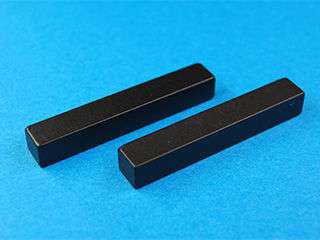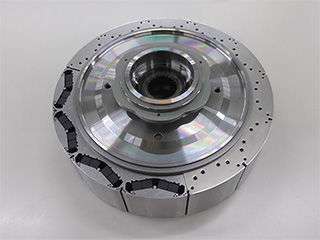July 13, 2016 weblog
Hybrid car motor uses no heavy rare earth, uses light rare earth element

(Tech Xplore)—Anticipate this: a car's motor magnet that does not have heavy rare earth elements. That is big, in that it marks a break from several constraints.
Hans Greimel, Asia Editor, Tokyo, Automotive News, explained that this is all about a new electric motor for hybrid vehicles "that tackles two top challenges in manufacturing the crucial drivetrain component: The high cost and uncertain supply of the rare-earth metals used in their powerful magnets."
Greimel said, in short, the development frees Honda from being "at the mercy of supply bottlenecks of the sparsely distributed metals and increasing prices as demand for them soars."
A Tuesday announcement datelined Tokyo was a joint release from the two companies involved, Daido Steel and Honda. They said they achieved a world's first, in a practical application of a hot deformed neodymium magnet with no heavy rare earth. (Heavy rare earth is one of three—light, medium and heavy—categories of rare earth.)
Neodymium magnets have the highest magnetic force among all magnets in the world, said the news release, and they are used for the drive motors of electric vehicles including hybrid vehicles. Demand for neodymium magnets are expected to grow exponentially, the company said.
Neodymium magnets must have high heat resistance properties in a high temperature environment. Adding heavy rare earth (dysprosium and/or terbium) to the neodymium magnets has been a conventional method to ensure the needed heat resistance.
But that means as it says, using heavy rare earth. Stable procurement and material costs represent the headaches. Cutting down on the use of heavy rare earth elements has been a challenge in using neodymium magnets for the drive motors of hybrid vehicles.
"This technology will lower our costs and reduce our exposure to price fluctuations," a Honda official told reporters, said Reuters.
How did they do it? This is a joint development effort.

Daido Electronics, a subsidiary of Daido Steel, has been producing neodymium magnets using a hot deformation method, which is not the same as the sintering production method. The hot deformation method enables nanometer-scale crystal grains to be well-aligned to realize a fine crystal grain structure approximately ten times smaller than that of a sintered magnet. The benefit is in magnets with greater heat resistance.
Daido Steel and Honda jointly developed the new neodymium magnets.
Greimel pointed out that Honda's new technology was not completely free of rare-earth metals but neodymium "is considered a light rare-earth metal and can be sourced from China as well as other countries, such as the U.S. and Australia. The heavy rare-earth metals dysprosium and terbium aren't readily sourced from anywhere else besides China."
Daido Steel evolved its hot deformation technologies and Honda revised the shape of the magnet.
Honda designed a new motor to accommodate this new magnet. In addition to the shape of the magnet, Honda revised the shape of the rotor, said the announcement, "to optimize the flow of the magnetic flux of the magnet."
What's next:
Starting next month, August 2016, Daido Electronics will begin the mass-production and shipment of this magnet using a new production line that the company built in its factory, said the news release. "Honda will continue expanding application of this technology to new models in the future," it added.
Honda Freed, which is scheduled to go on sale this fall, will be the first hybrid vehicle to adopt the new magnet. Automotive News described the car as "a Japan-market subcompact minivan based on the Fit architecture."
China is the world's key producer of rare-earth metals, accounting for as much as 90 percent of global output, said Automotive News.
More information: world.honda.com/news/2016/4160712eng.html
© 2016 Tech Xplore


















